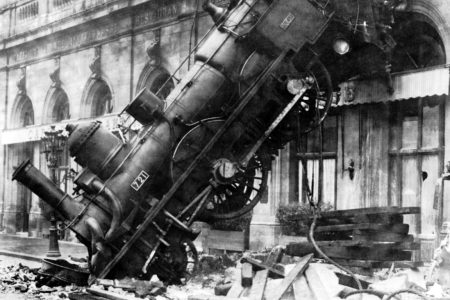When it comes to tackling enterprise-level operations and events, even one small mistake can be costly. Costly in terms of money, yes, but also time, resources, and reputation.
What have I found to be the biggest mistake of all? Failing (or actively neglecting) to address possible mistakes in the first place.
It’s only through potential pitfalls that we can find success. But many consultants don’t want to recognize the possibility of mistakes because they’re either worried about how that might make them ‘look’ (and they want to be liked) or they are blind to the idea that something often (always) goes wrong.
Sometimes the mistake is big, sometimes it’s small. Either way, it doesn’t matter when you’re prepared and plan for issues in advance so you can get ahead of them.
What are the top mistakes in operations and enterprise planning? Let’s take a look.
Not prioritizing the guest or customer experience
Operations teams think about their needs, their time, and their resources, and completely forget who it’s all for — the people attending the event, and what they want and need.
How do you know what those wants and needs are? Start with the basics — Is the experience easy and enjoyable for them? Is there signage, wayfinding, and a general flow, or will they be stressed out and confused from the moment they pass through the doors? Do they have access to basic human requirements, like water and bathrooms? (It might sound facetious, but you’d be surprised how often I encounter oversights such as these).
Then, improve upon it with external listening. Check on social media. Speak to people on the ground. Listen and apply your learnings. Step outside your operations mindset and a ‘just get it done’ mentality to prioritize the larger vision.
Oh, and don’t assume that your guests will ask all the right questions. Get in front of them by anticipating the right answers to the wrong questions.
Failure to plan an incident response
A major mistake in operations and enterprise planning is thinking nothing will go wrong. Knowing that incidents will happen isn’t being negative or ‘jinxing’ yourself; it’s simply responsible.
Actively and intentionally plan for it all. Develop a plan for everything running behind schedule. Have a plan for if the sound system cuts out. Plan for a tornado warning (seriously, this is the level of detail you want to get to). Plan for the unplannable so that when something starts to go downhill, you already have a solution in place to catch it before it snowballs.
Lack of proper infrastructure
With your plans in place, you need the proper infrastructure to make it happen. I’ve seen operations teams draft their rock-solid plans to perfection, but they’re missing one seemingly tiny detail (or a glaringly obvious one) that makes them unable to get it off the ground when it’s go time.
A plan doesn’t work if it’s just hypothetical or a concept, so ensure you have the resources to put it into action. Do this before the potential issue even happens by running through the scenario in a test run with your team.
As President Dwight D. Eisenhower once said,
“In preparing for battle I have always found that plans are useless but planning is indispensable.”
Zero communications plan
Plan, check. Infrastructure, check. Now, does everyone know about it? Nothing causes teams and subsequent operations to fall apart faster than a faulty communication plan (or lack of one altogether).
Ensure everyone knows who is handling what in your incident responses. Who do they need to talk to? How will they get in touch? Communication is a vital key to the success of enterprise planning — I cannot overstress the importance of solid and efficient communication. It can prevent a small hiccup from turning into a disaster. Know not only what to communicate, but how to communicate, too.
Not having a well-rounded team
Teamwork makes the dream work, but only when everyone has a clearly defined role, knows it, and sticks with it. One mistake I see operations and enterprise planning teams make is having too many of the same type of player, which can create gaps, leave areas unattended, and result in things falling apart.
(Check out this blog post where I share in more detail the five key players every operations team needs to be successful.)
The Showpiece Difference
For every project the Showpiece Solution team joins, we run table-top scenarios for all possible issues we can fathom. In order to figure out what these situations could be, we start by asking the right questions.
When a question can’t be answered, we know we need to find the answers and subsequent solutions by applying our tools for successful enterprise planning. To see this in action, check out this case study on planning for the 58th Presidential Inaugural Committee.
If you’re ready to work with a team that catches problems before they happen, reach out to us today to see how we can help.

